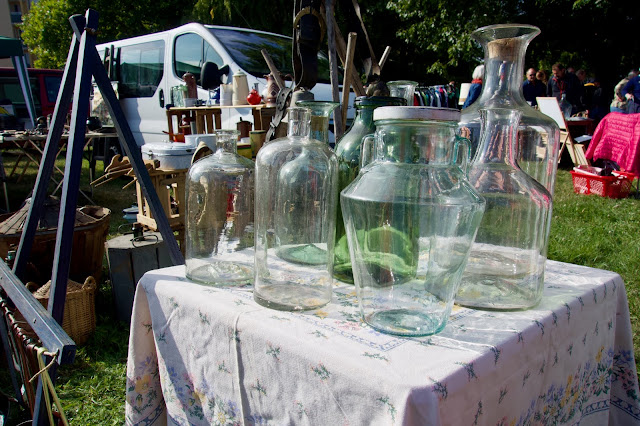D-Day Through German Eyes by Holger Eckhertz
War is brutal, unforgiving destruction, formed by grand
strategies, over which the men and women who fight the war have little control,
and their efforts are mostly forgotten. The
personal experiences of those who fight and die is seldom in the history books,
and not at all in the high school classroom.
Yes, Wellington beat Napoleon at Waterloo. MacArthur and Nimitz followed different
strategies in the Pacific. Eisenhower
was the Supreme Commander in Europe. Patton
was a great commander,who slapped a soldier.
But, what of the man in the trench, with dust in his eyes,
while the man beside him has skin burned away and dies in the horrifying hell
of being burned alive by white phosphorous? How about irrational hate for an enemy whose
bullets ripped your friend apart and left a bloody mess of what used to be a
man?
We see old newsreels of the storming of the beaches at
Normandy. We’re shocked at bodies floating in the waves and slumped in the
sand. But, it’s long ago and not
personal. You never knew your dad’s
brother or your aunt’s husband. They
died in the war. The fullness of their lives limited to a bland statement.
I don’t blame the teachers or the writers of history books,
who have compressed time and pages to make a good summation. Even movies like ‘Saving Private Ryan’ or
books like ‘Band of Brothers’, must of necessity leave out details in favor of
painting with a broad brush and keeping the plot moving.
Sometimes an author gets it right, but often the work is
fiction, like Norman Mailer’s ‘The Naked and the Dead’. Another is ‘The Red Badge of Courage’ by
Steven Crane, and a third is ‘Killer Angels’ by Michael Shaara. And while novels pick up the flavor of men in
battle, they are the voices of those men portrayed by fictional characters and
created by the authors. I’m not
belittling these books and have enjoyed all three immensely. But, Holger Eckhertz’s book is the real thing,
unvarnished, with the smell of cordite and blood and the feel of truth.
To me, real history is personal and for the common soldier,
sailor, Marine, or aviator, war is as personal as it gets. But even more rare than personal history is personal
history seen from the other side. In D-Day: Through German Eyes, Holger
Eckhertz shares interviews with German solders, both officers and other ranks,
of what they saw and felt, their fears and tragedies. He puts a human face on an implacable enemy,
not to vilify, but to trace commonalities of fighting men, no matter the style
and color of their uniforms.
“We crouched down there (in the chamber under the German
bunker) and looked up at the roof over us, as the English up there began to set
off explosions and smash our equipment…It was extremely hot and smoky in the
chamber, and sweat ran down my face as I crouched there, wrapping a bandage
around my wounded arm and looking (up) at the trap door….
…the thought of those incendiary grenades coming down into
our confined space was horrifying. Some
of my men began praying, while others kept up a stream of muttered obscenities
directed at the enemy, vowing a dreadful revenge for this humiliation.”
“…why would they (the English) want to burn us alive when we
were protecting Europe? What was the
origin of this hatred? I had no answer
to such questions.”
Eckhertz takes us into the mind of the enemy, near the
beaches, in the bunkers further back, into hand-to-hand combat and best of all
into the mind of the German soldier, his thoughts, his fears, his sudden
realization that this is it. Not just a
feint, not just a commando raid. He
looks though the heavy cement bunker’s machine gun slits and sees the sea alive
with more ships and landing craft than he could ever imagine. Unimaginable power.
This book is alive with emotion, dread, realizations, and all
the personal horrors of war. If you want
a glimpse of D-Day as you’ve never seen it, D-Day: Through German Eyes is a book you can’t and won’t stop
reading. This is the story of the German soldier, not another caricature of the
hated Nazi, but a personal glimpse of men at war.
































